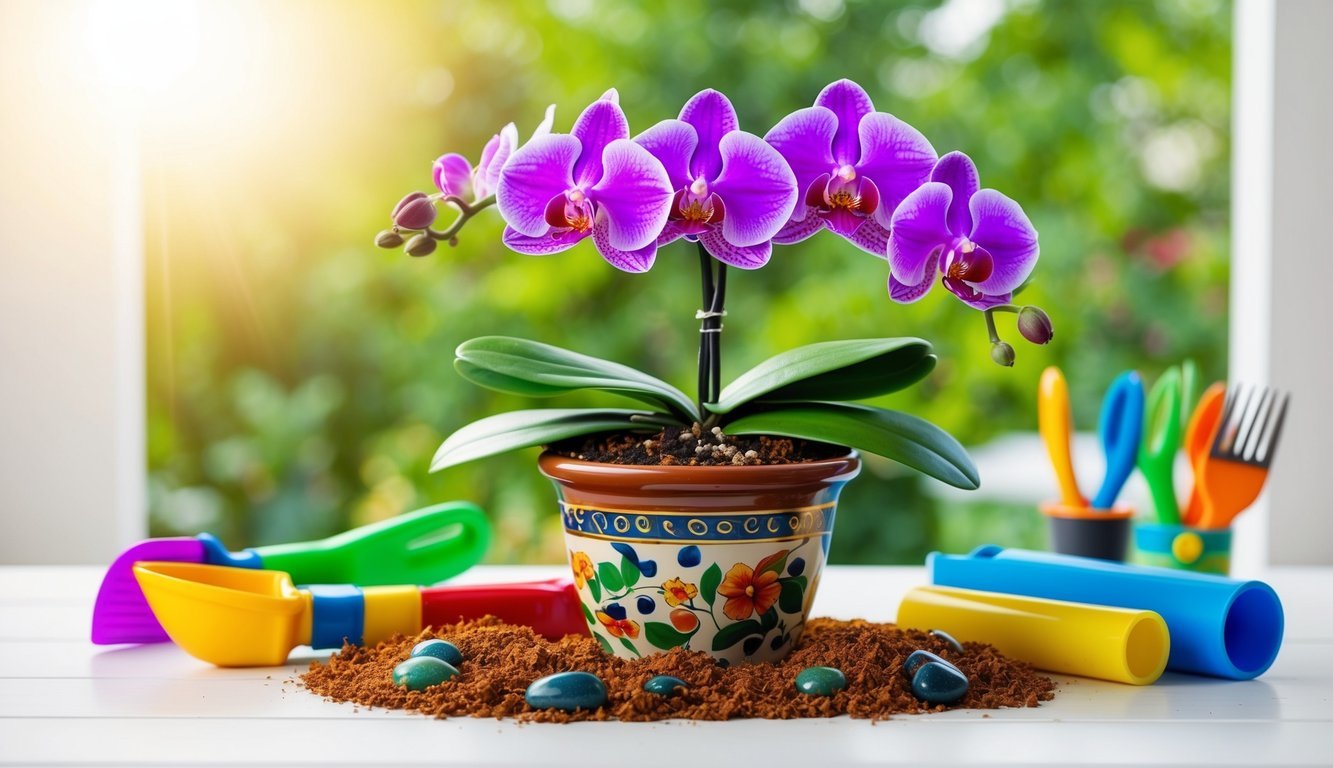
Orchids may seem intimidating to those new to the world of gardening, but fear not! With a little knowledge and care, these beautiful flowers can flourish in your space.
Renowned plant care expert Matt Dursum offers invaluable insights to guide you in nurturing your orchids from the very beginning.
Adding orchids to your indoor decor not only enhances the aesthetics but can also lead to years of enjoyment—some can live vibrantly for over 15 years! With an astonishing diversity of over 26,000 species, orchids come in various shapes, sizes, and fragrances, growing in different environments.
While some prefer to root in soil, others thrive on trees or rocks.
Initial Setup for Your Orchid
Although these enchanting plants might appear complex, they’re relatively easy to care for with the right approach.
Follow these 11 straightforward steps to ensure your orchid thrives and blooms in abundance:
- Pot Selection: Begin by choosing a suitable pot.
Both terracotta and plastic options work well, but keep in mind that the specific type of orchid you’re welcoming determines the best choice.
If your orchid prefers a more natural habitat, such as rocks or trees, select a container accordingly to avoid causing unnecessary stress.
- Choose the Ideal Soil Mix: Orchids thrive in well-draining environments.
A mixture of tree bark, moss, coconut husk, and perlite provides a perfect foundation.
Bark-based mixes particularly benefit epiphytic orchids by allowing air to circulate around the roots and facilitating quick drainage.
Specialty orchid potting mixes are also a convenient option.
- Prep Your Orchid for Repotting: After your new orchid has completed its blooming cycle, it’s time to transplant it.
Before transferring it to a new pot, gently inspect the roots and use sanitized pruning shears to remove any unhealthy or damaged sections.
- Repotting Your Orchid: Place the orchid in its new container filled with the prepped orchid mix, ensuring no air pockets remain.
Fill in any gaps with additional bark or perlite to secure the plant.
- Create a Fertilization Plan: Once you’ve repotted, it’s essential to implement a feeding routine.
Apply fertilizer at half the recommended strength and water the orchid afterward to protect the roots and prevent mineral build-up.
- Establish a Watering Routine: A typical error for new orchid gardeners is overwatering.
To steer clear of root rot, it’s safer to slightly under-water them.
Aim to water your orchid every week to two weeks, ensuring both the roots and the potting medium stay sufficiently moist.
- Find the Perfect Lighting Spot: Position your orchid in a well-lit area with bright, indirect light.
Most species will thrive with this kind of exposure, aiding in their growth and blooming.
- Ensure Sturdy Support: Place your orchid on a stable surface.
If needed, use stakes within the pot to provide extra support to the flower stems, promoting healthy growth.
- Monitor Temperature: Most orchids dislike cold environments.
Keep a close watch on temperature fluctuations and avoid placing them near drafts from windows or air conditioning vents.
- Maintain Humidity: Orchids generally prefer humidity levels above 50%.
To boost moisture, consider misting your plant regularly or placing a shallow dish filled with water nearby to enhance the room’s humidity.
- Commit to Consistent Care: Regularly inspect your orchids for any signs of pests or diseases.
Stick to your watering and fertilizing schedules to keep the plants healthy.
Ongoing Care for Your Orchid
Orchids are captivating houseplants that can bring beauty and joy into your life with proper care.
Their unique needs require attention to ensure they flourish.
By following these essential steps as you welcome your orchid into your home, you can create a nurturing environment for this exceptional plant.
With your dedication, these delightful flowers may soon become treasured companions in your indoor garden.
Source: Epicgardening

